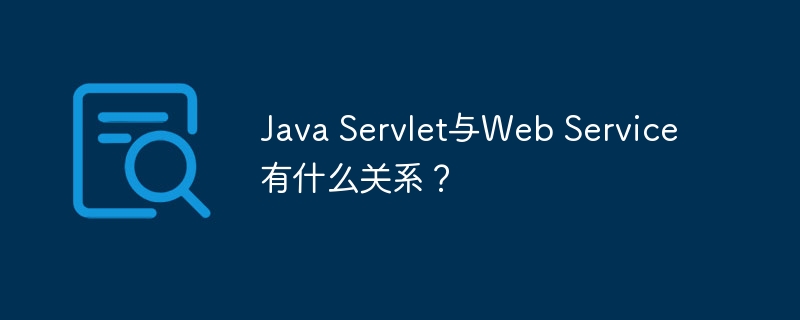
In Java EE development, Servlets are used as the middle layer between the web application and the client to handle HTTP requests. Web Services are APIs built through SOAP or REST that allow different applications to communicate over the network. The relationship between the two is as follows: Servlets can receive and respond to messages as Web Service endpoints. Web services can be implemented in servlets, using the functionality provided by the Java EE container. Servlets can access web service deployment information, such as endpoint addresses.

Java Servlet and Web Service
In Java EE development, Servlet and Web Service play different roles, but they Closely related, together provide functionality for web applications.
Servlet
Servlet is a Java class used to handle HTTP requests and generate responses. It runs on the server side and acts as a middle layer between the web application and the client. Servlets can perform a variety of tasks, including:
Web Service
Web Service is an application programming interface built using technologies such as SOAP (Simple Object Access Protocol) or REST (Representational State Transfer) ( API). It allows different applications and systems to communicate over a network. Web services typically expose a set of methods that clients can invoke via SOAP message calls or HTTP requests.
Relationship
The relationship between Servlet and Web Service is as follows:
Practical case
The following is a simple example of using Servlet as a Web Service endpoint:
// MyWebService.java
@WebServlet(name = "MyWebService", urlPatterns = "/service")
public class MyWebService extends HttpServlet {
@Override
protected void doPost(HttpServletRequest req, HttpServletResponse resp) throws ServletException, IOException {
// 处理 SOAP 消息或 HTTP 请求
// ...
// 生成响应
// ...
}
}In the web.xml deployment descriptor , we can configure this Servlet as a Web Service endpoint:
<servlet>
<servlet-name>MyWebService</servlet-name>
<servlet-class>MyWebService</servlet-class>
</servlet>
<servlet-mapping>
<servlet-name>MyWebService</servlet-name>
<url-pattern>/service</url-pattern>
</servlet-mapping>On the client side, we can use the SOAP or REST client library to call the Web Service:
// Client.java
public class Client {
public static void main(String[] args) {
// 创建 Web Service 客户机
// ...
// 调用 Web Service 方法
// ...
// 处理响应
// ...
}
}The above is the detailed content of What is the relationship between Java Servlet and Web Service?. For more information, please follow other related articles on the PHP Chinese website!
